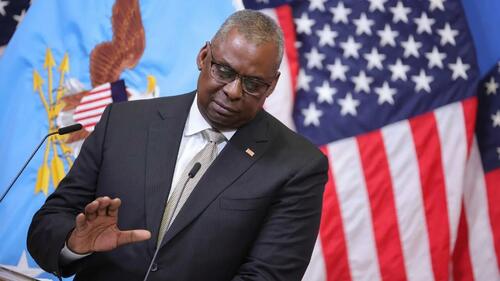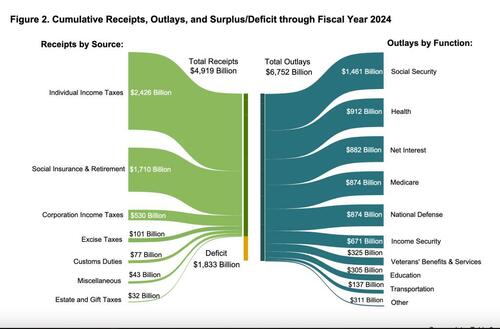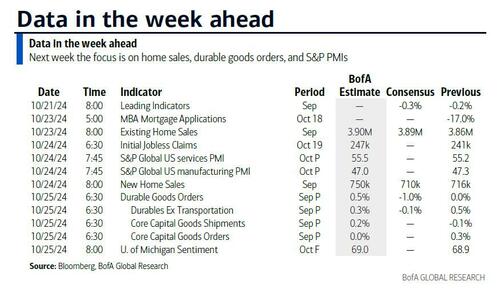Philip Zimbardo, Psychologist Behind Stanford Prison Experiment, Dies At 91
Authored by Bill Pan via The Epoch Times (emphasis ours),
Philip Zimbardo, the renowned psychologist whose controversial Stanford Prison Experiment explored how social situations influence individual behavior, has died at the age of 91.
Stanford University, where Zimbardo was a professor emeritus of psychology, announced his death on Oct. 18. An obituary on his personal website stated that he died peacefully at his San Francisco home on Oct. 14, surrounded by his wife and children.
During a career spanning more than five decades, Zimbardo researched a wide range of topics including why people are shy, why people choose to be bystanders in the face of wrongdoing, and how cult leaders exert mind-control over followers.
However, his Stanford Prison Experiment in 1971 was the one that brought him the most attention—and enduring scrutiny.
For $15 a day, 19 male college students were recruited to role-play as either guards or prisoners in a mock prison set up in the basement of Stanford psychology department building. Zimbardo, acting as the “prison superintendent,” and his team observed the interactions, with minimal instructions given to the participants.
Initially, the participants were expected to interact peacefully. Yet, to the shock of Zimbardo and his team, the “guards” quickly began acting in a tyrannical manner and abusing their power. “Our guards became sadistic, and our prisoners became depressed and showed signs of extreme stress,” Zimbardo recalled.
The experiment, intended to last two full weeks, was called off after six days and, over the decades since, has drawn strong criticism.
Critics have questioned many aspects of Zimbardo’s stories, noting that only a third of the “guards” exhibited sadistic behavior, and that some “prisoners” might have faked their mental breakdowns to secure early release because Zimbardo failed to make it clear that they were free to quit at any time. Zimbardo’s dual role as the “prison superintendent” and head researcher, siding with the guards, also fueled ethical concerns.
Zimbardo defended his work, which was frequently cited by scholars seeking to understand the psychology behind atrocities including the Holocaust, the Rwandan genocide, and the abuse of prisoners at Iraq’s Abu Ghraib prison. In 2018, he emphasized that the experiment should be viewed as a “cautionary tale” about “what might happen to any of us if we underestimate the extent to which the power of social roles and external pressures can influence our actions.”
While recognizing that ordinary people have the potential to commit evil that would otherwise be unthinkable, Zimbardo nevertheless proposed the opposite: that everyone has the capacity to do unthinkable good. He termed this the “banality of heroism,” a concept suggesting that we are all potential heroes, simply awaiting the moment in life when we are called upon to perform a heroic act.
“The decision to act heroically is a choice that many of us will be called upon to make at some point in time,” Zimbardo wrote in 2006. “By conceiving of heroism as a universal attribute of human nature, not as a rare feature of the few ‘heroic elect,’ heroism becomes something that seems in the range of possibilities for every person, perhaps inspiring more of us to answer that call.”
In 2010, Zimbardo established the Heroic Imagination Project, a nonprofit organization that seeks to prepare everyday people for a moment to help others in a time of need.
“If we lose the ability to imagine ourselves as heroes, and to understand the meaning of true heroism, our society will be poorer for it,” he wrote. “But if we can reconnect with these ancient ideals, and make them fresh again, we can create a connection with the hero in ourselves.”
Born on March 23, 1933, in New York City, Zimbardo grew up in poverty in the Bronx. In high school, he developed a lifelong friendship with fellow classmate Stanley Milgram, who went on to become a psychologist and conduct the famous Milgram obedience experiments, a direct inspiration of the 1971 experiment.
Zimbardo joined Stanford’s faculty in 1968 after teaching at New York University and Columbia University. He retired in 2003.
Zimbardo is survived by his wife of 52 years, Christina Maslach Zimbardo, a former graduate of his who famously persuaded him to shut down the Stanford experiment early after witnessing its disturbing effects firsthand. He is also survived by his son Adam, from his first marriage to the late Rose Zimbardo, and daughters Zara and Tanya.
Tyler Durden
Mon, 10/21/2024 – 13:05
via ZeroHedge News https://ift.tt/jWJyK6N Tyler Durden















